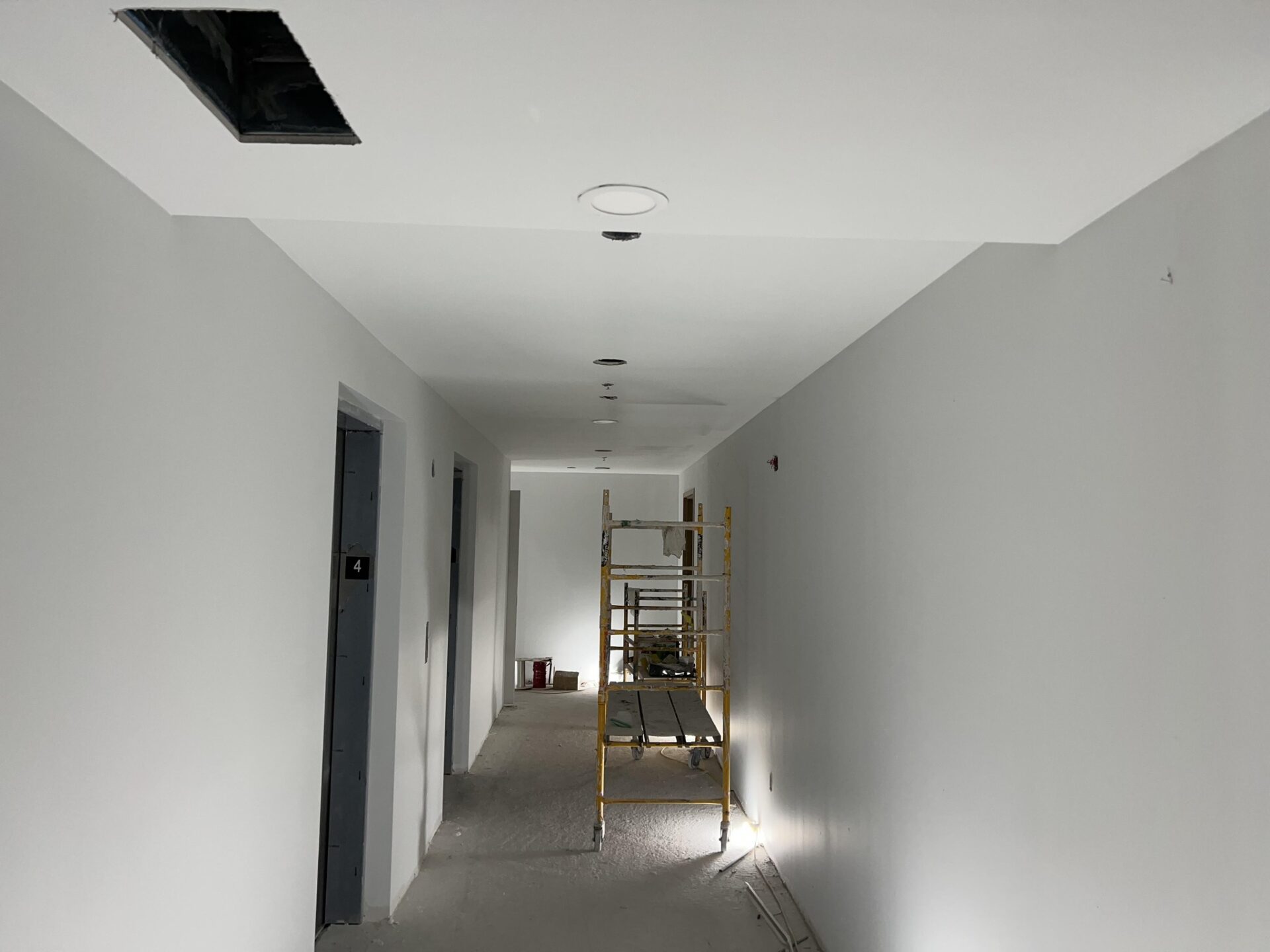Ever looked at your walls and thought they could use a little TLC? Most walls can be repaired to look smooth, and in this article we outline the process of transforming rough, unfinished walls into beautifully refined surfaces. With our step-by-step instructions, accompanied by insights into essential drywall techniques and best practices, we aim to equip you with the skills and confidence to elevate any space with professional-quality drywall finishing.
Now keep in mind this work requires physical labour, so if you realize that you’ve bitten too much than you can chew, call our team at 250-880-8849 in Victoria and 604-913-4656 in Vancouver BC.
At Drywall Medic, our purpose is to empower homeowners and professionals alike with the knowledge and expertise needed to achieve flawless drywall finishes. Get ready to dive into the nitty-gritty of drywall finishing, where we will transform your walls from drab to fab, one step at a time. Let’s get started!
The Fundamentals of Finishing Drywall From the Experts: Drywall Medic
It is important to understand the fundamentals of drywall finishing before delving into its practical applications. Drywall finishing involves concealing joints, screw indentations, and imperfections in the drywall surface to create a seamless look. It is important to do proper preparations, which include clearing the workspace, setting up the supplies and tools, and making sure there is enough lighting and ventilation.
Setting up your workspace
The first step to flawless drywall finishing is setting up an atmosphere that supports high-quality work. Remove any clutter and obstructions to make room for you to move about. To minimize disruptions during the procedure, arrange your tools and materials in an easily accessible manner. Furthermore, adequate lighting and ventilation are essential for obtaining accuracy and precision in your task.
Applying the First Coat: Laying the Groundwork for Perfection
Now that the workspace is ready, it is time to fill in the screw indentations and drywall seams with the first layer of joint compound, commonly referred to as mud. Apply a thin coating of compound to the joints with a taping knife to make sure they are completely covered. Next, insert the drywall tape into the compound, making sure to smooth out any creases or air bubbles along the way. This first coat fills in voids and provides a strong base for a flawless finish, laying the groundwork for later applications.
Refining the Surface: Application of the Second Coat
It is time to apply the second coat of joint compound after the first coat has dried. Using the foundation set by the previous coat, this thicker layer fills in more voids and defects. Apply the compound with a bigger taping knife in even, clean strokes, making sure the edges are feathered to match the surrounding drywall. At this stage, accuracy and focus on details are necessary to produce a smooth, even surface devoid of ridges or lumps.
Smoothing Out Imperfections: Sanding Techniques for Drywall Finishing
To get a uniform, smooth finish, sand the surface after the second coat has dried. To begin, remove any high spots, lumps, or extra compounds with coarse sandpaper. To smooth out the surface even further, progressively move on to sandpaper with finer grit. Since over-sanding can cause uneven spots or damage to the drywall, this technique calls for dexterity and patience. To guarantee a perfect finish, take your time and check the surface often.
Completing Including Final Details: Refinement of Corners and Edges
Now that the main surface has been smoothed, the drywall’s corners and edges need to be properly finished. To provide outer corners more resilience and a clean, precise finish, install corner beads. Apply joint compound along the borders with a taping knife and smooth it down to match the surrounding surface. This stage requires careful attention to detail because finished walls look more professional overall when their edges and corners are defined.
Overcoming Common Challenges in Drywall Finishing
Even with careful attention to detail, challenges may arise during the drywall finishing. From air bubbles in the compound to uneven sanding or adhesion issues, it is important to know how to troubleshoot and address these issues effectively. Keep a supply of extra joint compound and drywall tape on hand for quick repairs, and do not hesitate to seek advice or guidance if you encounter difficulties beyond your expertise.
Advanced Techniques for Professional Results
There exist a few sophisticated methods that are worthwhile to investigate for individuals seeking to enhance their abilities in drywall finishing. These could include texturing techniques to give the finished walls more visual interest, such orange peel or knockdown. Furthermore, experimenting with various joint compounds or tool types can produce interesting outcomes and improve the space’s overall aesthetic appeal.
Professional Advice for Successful Drywall Finishing
It is imperative to approach the procedure with care, attention to detail, and a commitment to quality if you want drywall finishes that are genuinely faultless. To obtain a smooth, consistent finish, take your time in thoroughly preparing the surface, carefully applying each coat of compound, and sanding everything down. Above all, take your time and do not rush the process. If you need help, do not be hesitant to ask experts from Drywall Medic. It is quite hard to hang drywall which is the reason you need professional help. Contact details for Drywall Medic is as follows:
Victoria, BC: #136 – 2936 Amy Rd, Victoria, BC, V9B 0B2, Contact Number- 250-880-8849,
Vancouver, BC: 6894 192 St, Surrey, BC V4N 0B7, Contact Number- 604-913-4656

